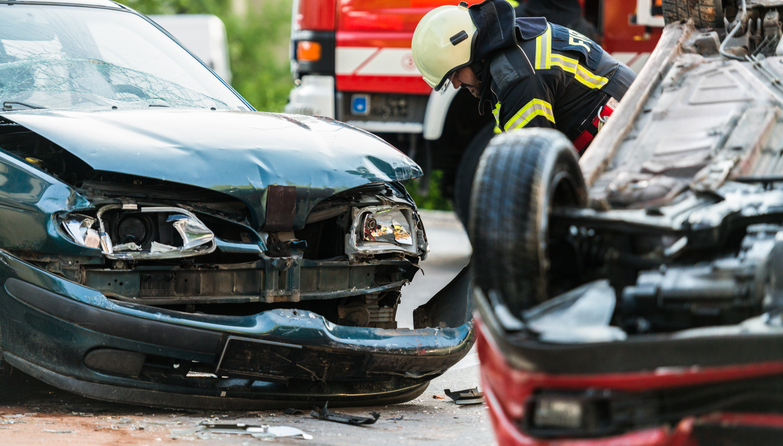Rear-end collisions are among the most common types of car accidents, especially in high-traffic areas like Los Angeles. While many people view them as minor fender benders, the reality is that even low-speed rear-end collisions can result in significant injuries and property damage. Understanding the causation behind these accidents, the physics involved, and the injuries that often result can help both drivers and accident victims navigate the aftermath more effectively.
What Leads to Rear-End Collisions?
There are several common causes behind rear-end collisions. These accidents occur when a vehicle crashes into the one in front of it, often because the driver at the rear fails to stop in time. Some of the key causes include:
Distracted Driving
With the increasing use of smartphones and in-car technology, distracted driving has become one of the leading causes of rear-end collisions. When drivers take their eyes off the road, even for a few seconds, they may not notice that traffic has slowed down or stopped, leading to an accident.Tailgating
Following too closely, or tailgating, is another common cause of rear-end collisions. Without sufficient distance between vehicles, drivers do not have enough time to react if the vehicle in front suddenly brakes.Speeding
Drivers who are speeding are less able to stop their vehicles quickly, increasing the risk of a rear-end collision if traffic slows down unexpectedly. Speeding also magnifies the impact of the collision, making injuries more severe.Weather Conditions
Wet or icy roads reduce tire traction, making it harder for vehicles to stop in time to avoid a rear-end collision. In California, sudden rain showers can create slippery road conditions that increase the risk of accidents.Sudden Stops
Unexpected or sudden stops by the vehicle in front can lead to rear-end collisions if the driver behind does not have enough time to react. Sudden stops are often caused by traffic congestion, pedestrians, or obstacles in the road.
The Physics of Rear-End Collisions
Understanding the physics behind rear-end collisions helps to explain why even seemingly minor accidents can result in significant injuries.
Inertia
According to Newton’s First Law of Motion, an object in motion will remain in motion unless acted upon by an external force. In the case of a rear-end collision, the vehicle being struck is suddenly pushed forward, but the passengers inside may continue to move at the vehicle’s original speed until they are restrained by a seatbelt or collide with the vehicle’s interior. This sudden force on the body can cause whiplash and other injuries.Speed and Force
The force involved in a rear-end collision depends on the speed of both vehicles. Even at low speeds (10-15 mph), the impact can generate enough force to cause significant injuries, particularly to the neck and spine. At higher speeds, the impact force is exponentially greater, which can result in more severe damage to both the vehicles and the people inside.Acceleration and Deceleration
Rear-end collisions often involve sudden deceleration of the front vehicle and the simultaneous acceleration of the rear vehicle. This combination creates a violent motion that can jolt passengers forward and backward, causing soft tissue injuries, concussions, and spinal damage.
Common Injuries in Rear-End Collisions
Rear-end collisions can lead to a wide range of injuries, some of which may not be immediately apparent after the crash. It’s crucial to seek medical attention, even if you feel fine right after the accident, as some injuries can develop later.
Whiplash
Whiplash is one of the most common injuries resulting from rear-end collisions. It occurs when the head is jerked forward and then back in rapid succession, straining the muscles and ligaments in the neck. Symptoms of whiplash include neck pain, stiffness, headaches, and dizziness.Back Injuries
The force of a rear-end collision can compress the spine, leading to back injuries such as herniated discs or fractures. These injuries can cause chronic pain, limited mobility, and in severe cases, nerve damage.Concussions and Traumatic Brain Injuries (TBIs)
The sudden jolt of a rear-end collision can cause the brain to hit the inside of the skull, resulting in a concussion or even a traumatic brain injury (TBI). Symptoms may include headaches, confusion, dizziness, and memory loss. In some cases, TBIs can have long-term cognitive effects.Spinal Cord Injuries
In more severe collisions, the spinal cord can be damaged, leading to partial or full paralysis. While this is less common in low-speed collisions, it can occur when the impact is particularly strong or when the vehicle behind is traveling at high speed.Facial Injuries
Airbags and seatbelts protect passengers from more severe injuries, but they can also cause facial injuries, especially in rear-end collisions. Airbags deploy rapidly, and if a passenger is too close to the steering wheel or dashboard, they can sustain cuts, bruises, or even broken bones in the face.
Preventing Rear-End Collisions
While you can’t control other drivers, there are steps you can take to reduce the risk of being involved in a rear-end collision:
- Maintain a Safe Following Distance: Keep at least three seconds of distance between your vehicle and the one in front of you. Increase this distance in bad weather or heavy traffic.
- Stay Alert: Avoid distractions like texting, eating, or adjusting the radio while driving. Stay focused on the road ahead and be aware of changing traffic conditions.
- Brake Early: If you need to stop suddenly, brake early and gently to give the driver behind you enough time to react.
- Check Your Mirrors: Regularly check your rearview and side mirrors for vehicles that may be following too closely.
- Use Hazard Lights: If you need to stop unexpectedly, turn on your hazard lights to alert drivers behind you.
How Our Car Accident Attorneys Can Help
If you’ve been involved in a rear-end collision, you may be entitled to compensation for your injuries, medical bills, and property damage. California law typically places the fault on the driver who rear-ended the vehicle in front, but insurance companies may try to dispute or minimize your claim. An experienced personal injury attorney can help you navigate the legal process and fight for the compensation you deserve.
At Weiss Attorneys, we understand the physical, emotional, and financial toll that rear-end collisions can take on victims. Our experienced team is here to help you navigate the legal process, deal with insurance companies, and recover the compensation you need to move forward. Contact us today for a free consultation and let us help you get the justice you deserve after a rear-end collision.









